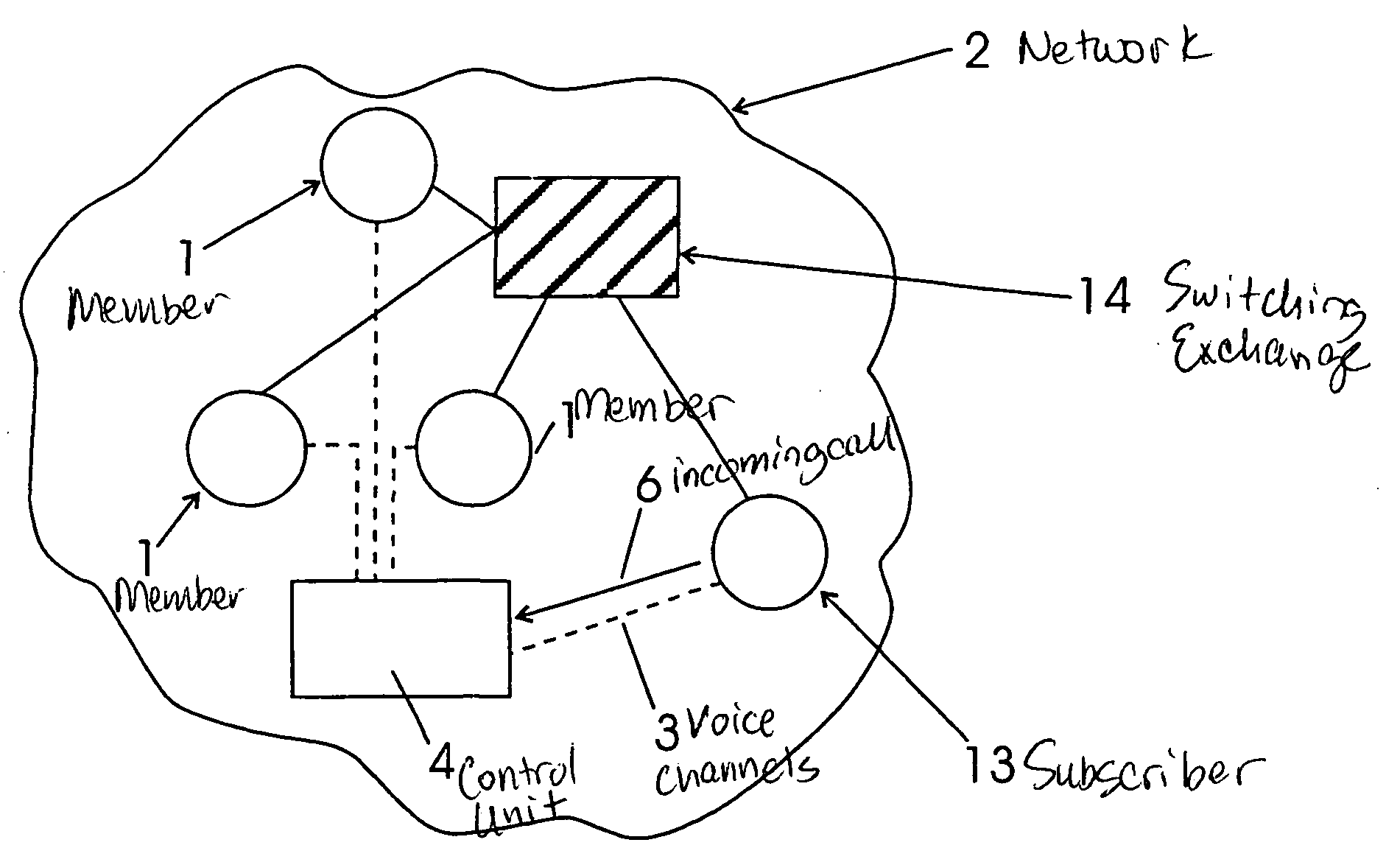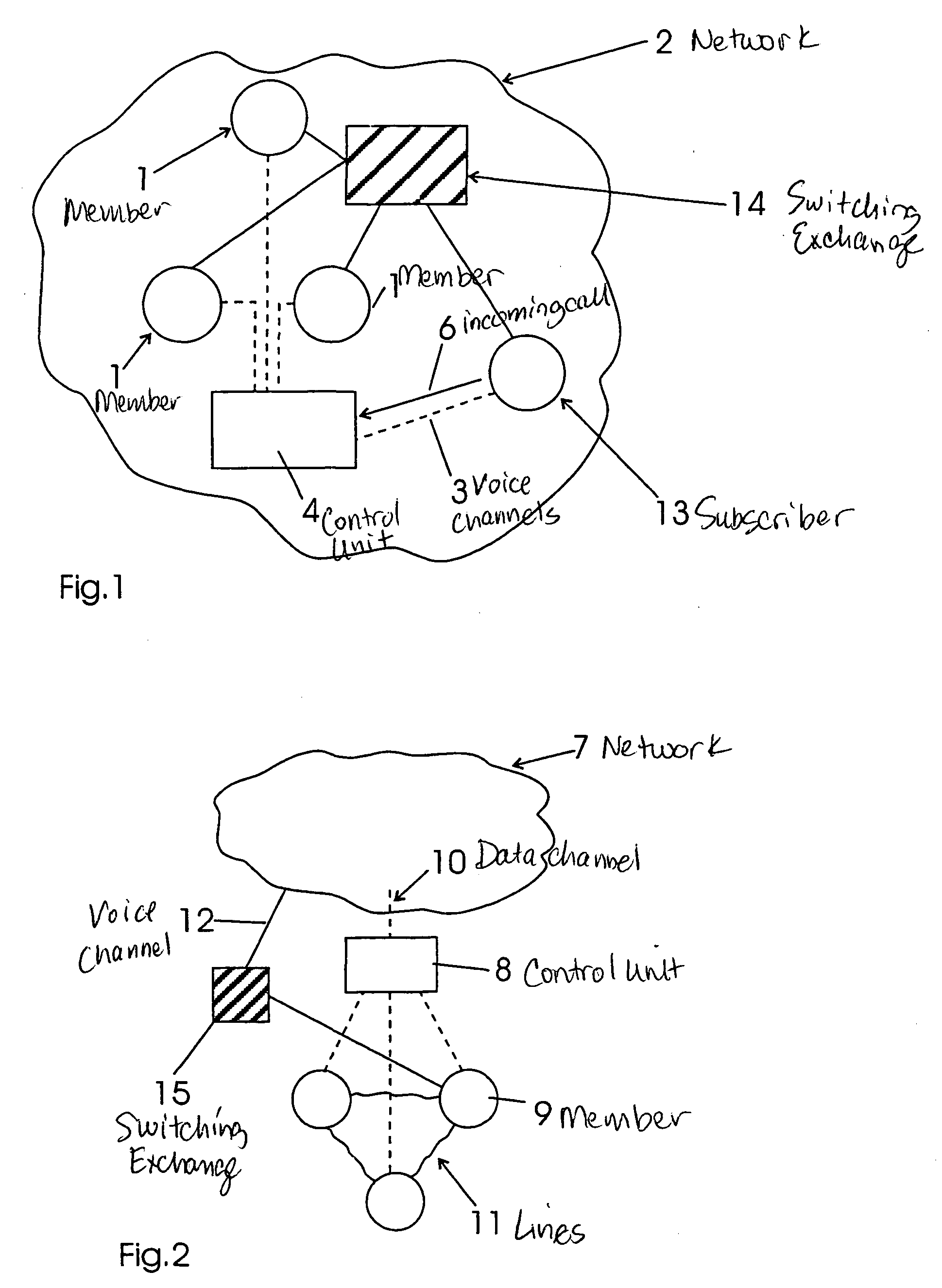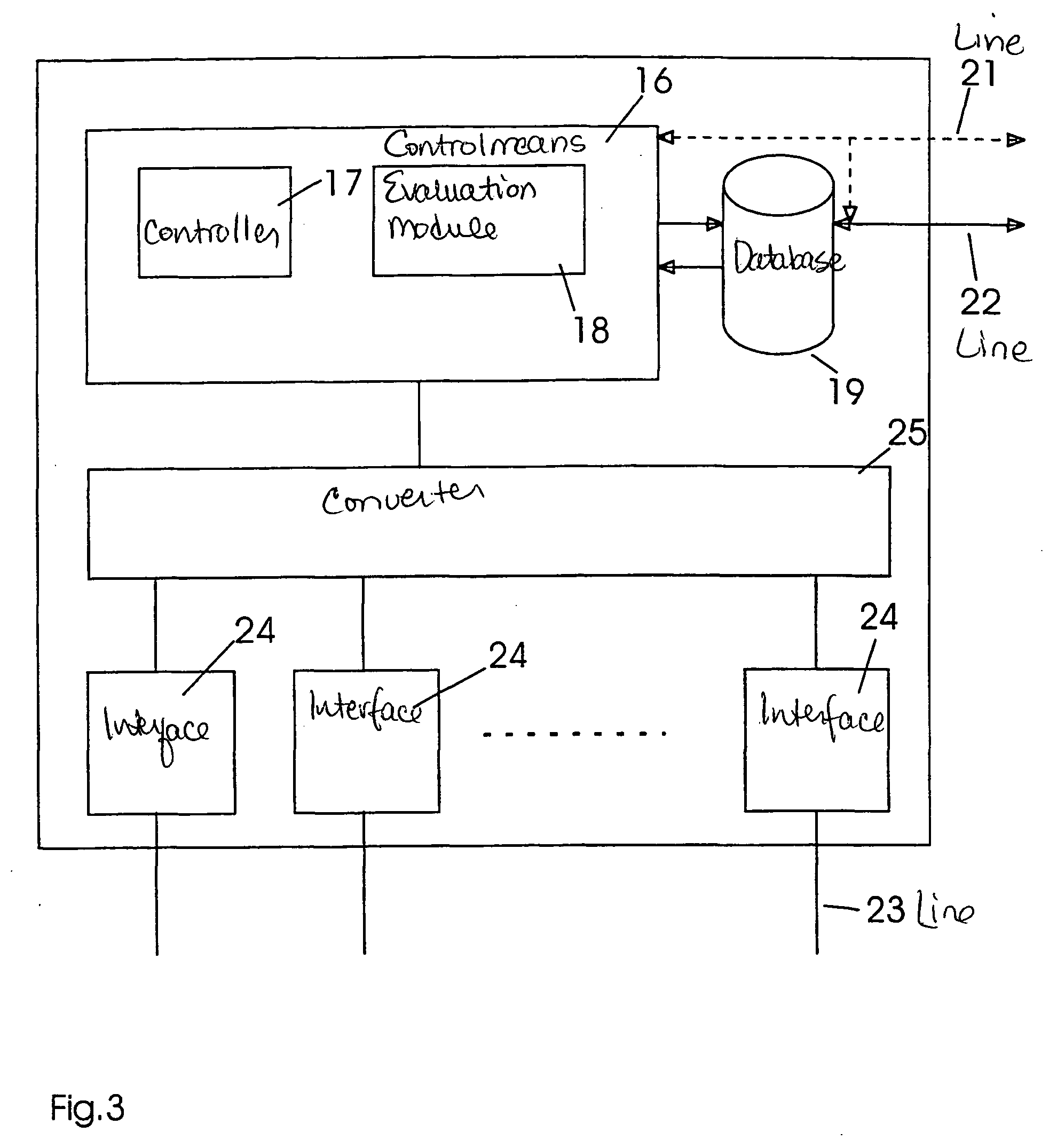Call distribution in distributed call centers
a call center and call technology, applied in the field of call center distribution, can solve the problems of poor utilization of existing capacity, large loss of information, and organization within the group only being able to profit conditionally, and achieve the effects of improving service, facilitating regulation, and strengthening customer ties to the network operator
- Summary
- Abstract
- Description
- Claims
- Application Information
AI Technical Summary
Benefits of technology
Problems solved by technology
Method used
Image
Examples
Embodiment Construction
[0020]FIG. 1 shows three members 1 forming a subscriber group, the members being individual telephone information service centers, for example. These members 1 are integrated in an external “intelligent” network 2 and, accordingly, are interconnected via voice channels (solid lines) 3 of the lines of network 2 via a switching exchange 14. Likewise integrated in network 2 may be a subscriber 13 who does not belong to the group. The group may be defined by a control unit 4, which is integrated in network 2 and, in this case, is a central control unit 4 to which at least subscriber 13 is still connected. The connection to control unit 4 can be established via data channels (dotted lines) 3, which converge on control unit 4. In this example, control unit 4 is a server of the intelligent network. Control unit 4 is itself accessible via network 2 and may be dialed via its network identifier (e.g., a service phone number) by subscriber 13. In response to an incoming call (arrow 6), control...
PUM
 Login to View More
Login to View More Abstract
Description
Claims
Application Information
 Login to View More
Login to View More - R&D
- Intellectual Property
- Life Sciences
- Materials
- Tech Scout
- Unparalleled Data Quality
- Higher Quality Content
- 60% Fewer Hallucinations
Browse by: Latest US Patents, China's latest patents, Technical Efficacy Thesaurus, Application Domain, Technology Topic, Popular Technical Reports.
© 2025 PatSnap. All rights reserved.Legal|Privacy policy|Modern Slavery Act Transparency Statement|Sitemap|About US| Contact US: help@patsnap.com



